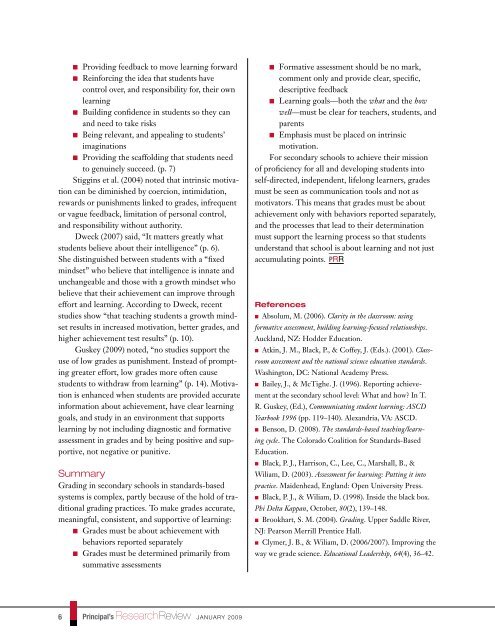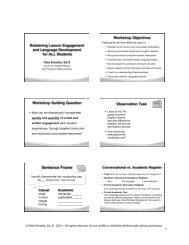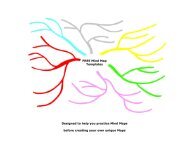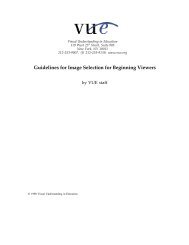Reforming Grading Practices in Secondary Schools - eStaffRoom
Reforming Grading Practices in Secondary Schools - eStaffRoom
Reforming Grading Practices in Secondary Schools - eStaffRoom
You also want an ePaper? Increase the reach of your titles
YUMPU automatically turns print PDFs into web optimized ePapers that Google loves.
n Provid<strong>in</strong>g feedback to move learn<strong>in</strong>g forward<br />
n Re<strong>in</strong>forc<strong>in</strong>g the idea that students have<br />
control over, and responsibility for, their own<br />
learn<strong>in</strong>g<br />
n Build<strong>in</strong>g confidence <strong>in</strong> students so they can<br />
and need to take risks<br />
n Be<strong>in</strong>g relevant, and appeal<strong>in</strong>g to students’<br />
imag<strong>in</strong>ations<br />
n Provid<strong>in</strong>g the scaffold<strong>in</strong>g that students need<br />
to genu<strong>in</strong>ely succeed. (p. 7)<br />
Stigg<strong>in</strong>s et al. (2004) noted that <strong>in</strong>tr<strong>in</strong>sic motivation<br />
can be dim<strong>in</strong>ished by coercion, <strong>in</strong>timidation,<br />
rewards or punishments l<strong>in</strong>ked to grades, <strong>in</strong>frequent<br />
or vague feedback, limitation of personal control,<br />
and responsibility without authority.<br />
Dweck (2007) said, “It matters greatly what<br />
students believe about their <strong>in</strong>telligence” (p. 6).<br />
She dist<strong>in</strong>guished between students with a “fixed<br />
m<strong>in</strong>dset” who believe that <strong>in</strong>telligence is <strong>in</strong>nate and<br />
unchangeable and those with a growth m<strong>in</strong>dset who<br />
believe that their achievement can improve through<br />
effort and learn<strong>in</strong>g. Accord<strong>in</strong>g to Dweck, recent<br />
studies show “that teach<strong>in</strong>g students a growth m<strong>in</strong>dset<br />
results <strong>in</strong> <strong>in</strong>creased motivation, better grades, and<br />
higher achievement test results” (p. 10).<br />
Guskey (2009) noted, “no studies support the<br />
use of low grades as punishment. Instead of prompt<strong>in</strong>g<br />
greater effort, low grades more often cause<br />
students to withdraw from learn<strong>in</strong>g” (p. 14). Motivation<br />
is enhanced when students are provided accurate<br />
<strong>in</strong>formation about achievement, have clear learn<strong>in</strong>g<br />
goals, and study <strong>in</strong> an environment that supports<br />
learn<strong>in</strong>g by not <strong>in</strong>clud<strong>in</strong>g diagnostic and formative<br />
assessment <strong>in</strong> grades and by be<strong>in</strong>g positive and supportive,<br />
not negative or punitive.<br />
Summary<br />
<strong>Grad<strong>in</strong>g</strong> <strong>in</strong> secondary schools <strong>in</strong> standards-based<br />
systems is complex, partly because of the hold of traditional<br />
grad<strong>in</strong>g practices. To make grades accurate,<br />
mean<strong>in</strong>gful, consistent, and supportive of learn<strong>in</strong>g:<br />
n Grades must be about achievement with<br />
behaviors reported separately<br />
n Grades must be determ<strong>in</strong>ed primarily from<br />
summative assessments<br />
n Formative assessment should be no mark,<br />
comment only and provide clear, specific,<br />
descriptive feedback<br />
n Learn<strong>in</strong>g goals—both the what and the how<br />
well—must be clear for teachers, students, and<br />
parents<br />
n Emphasis must be placed on <strong>in</strong>tr<strong>in</strong>sic<br />
motivation.<br />
For secondary schools to achieve their mission<br />
of proficiency for all and develop<strong>in</strong>g students <strong>in</strong>to<br />
self-directed, <strong>in</strong>dependent, lifelong learners, grades<br />
must be seen as communication tools and not as<br />
motivators. This means that grades must be about<br />
achievement only with behaviors reported separately,<br />
and the processes that lead to their determ<strong>in</strong>ation<br />
must support the learn<strong>in</strong>g process so that students<br />
understand that school is about learn<strong>in</strong>g and not just<br />
accumulat<strong>in</strong>g po<strong>in</strong>ts. PRR<br />
References<br />
n Absolum, M. (2006). Clarity <strong>in</strong> the classroom: us<strong>in</strong>g<br />
formative assessment, build<strong>in</strong>g learn<strong>in</strong>g-focused relationships.<br />
Auckland, NZ: Hodder Education.<br />
n Atk<strong>in</strong>, J. M., Black, P., & Coffey, J. (Eds.). (2001). Classroom<br />
assessment and the national science education standards.<br />
Wash<strong>in</strong>gton, DC: National Academy Press.<br />
n Bailey, J., & McTighe. J. (1996). Report<strong>in</strong>g achievement<br />
at the secondary school level: What and how? In T.<br />
R. Guskey, (Ed.), Communicat<strong>in</strong>g student learn<strong>in</strong>g: ASCD<br />
Yearbook 1996 (pp. 119–140). Alexandria, VA: ASCD.<br />
n Benson, D. (2008). The standards-based teach<strong>in</strong>g/learn<strong>in</strong>g<br />
cycle. The Colorado Coalition for Standards-Based<br />
Education.<br />
n Black, P. J., Harrison, C., Lee, C., Marshall, B., &<br />
Wiliam, D. (2003). Assessment for learn<strong>in</strong>g: Putt<strong>in</strong>g it <strong>in</strong>to<br />
practice. Maidenhead, England: Open University Press.<br />
n Black, P. J., & Wiliam, D. (1998). Inside the black box.<br />
Phi Delta Kappan, October, 80(2), 139–148.<br />
n Brookhart, S. M. (2004). <strong>Grad<strong>in</strong>g</strong>. Upper Saddle River,<br />
NJ: Pearson Merrill Prentice Hall.<br />
n Clymer, J. B., & Wiliam, D. (2006/2007). Improv<strong>in</strong>g the<br />
way we grade science. Educational Leadership, 64(4), 36–42.<br />
6<br />
Pr<strong>in</strong>cipal’s ResearchReview january 2009






